Brown may not be the first color that springs to mind when you think of fruits. Still, there are plenty of delicious examples with fruits that at least have a brown exterior to choose from. Some are well-known, others less so.
How many of these brown beauties are you familiar with? And are there any we’ve forgotten to include? Let us know in the comments below!
1. Dates
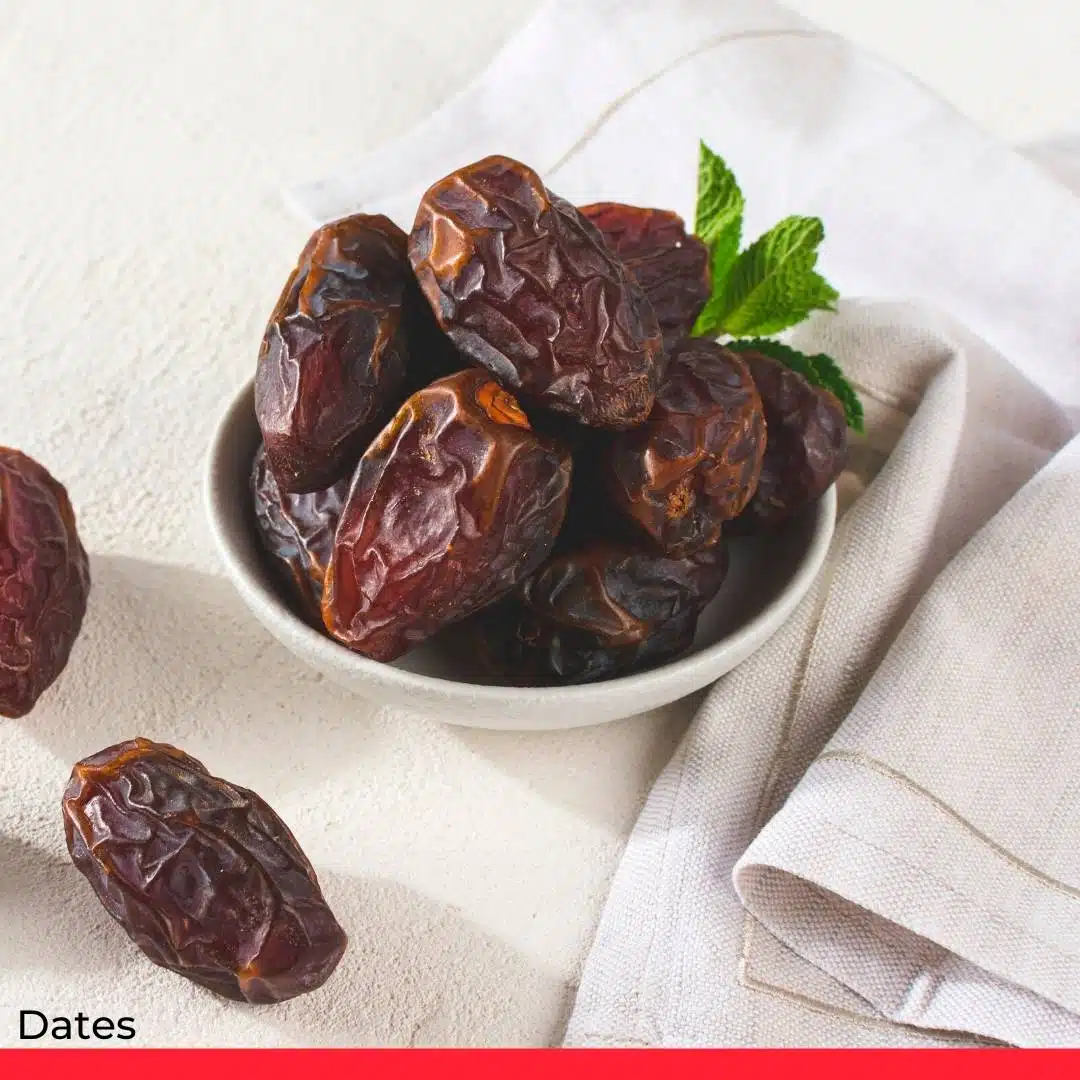
Dates are a staple of Middle Eastern cuisine, but they’re prized worldwide for their taste and elevated levels of nutrients. There are various kinds, but the Medjool is the most highly prized as these fruits are the sweetest and stickiest. The best time to buy fresh dates is between November and January.
Dates can be enjoyed raw, perhaps dipped into thick creamy yogurt. They can also be used to add sweetness to baked goods, reducing the amount of refined sugar needed in recipes.
They are rich in protective antioxidants and a valuable source of potassium.
2. Raisins

Brown raisins (aka sultanas) are sun-dried green grapes. Thomson’s Seedless is the most widely known variety.
You can use them in endless ways: in baked goods, added to porridge and cereals for a burst of sweetness, or in stews and tagines to add a little burst of sweetness.
In addition to health-giving antioxidants, they provide calcium and boron, which combine with vitamin D to help keep bones and joints healthy.
3. Jenipapo
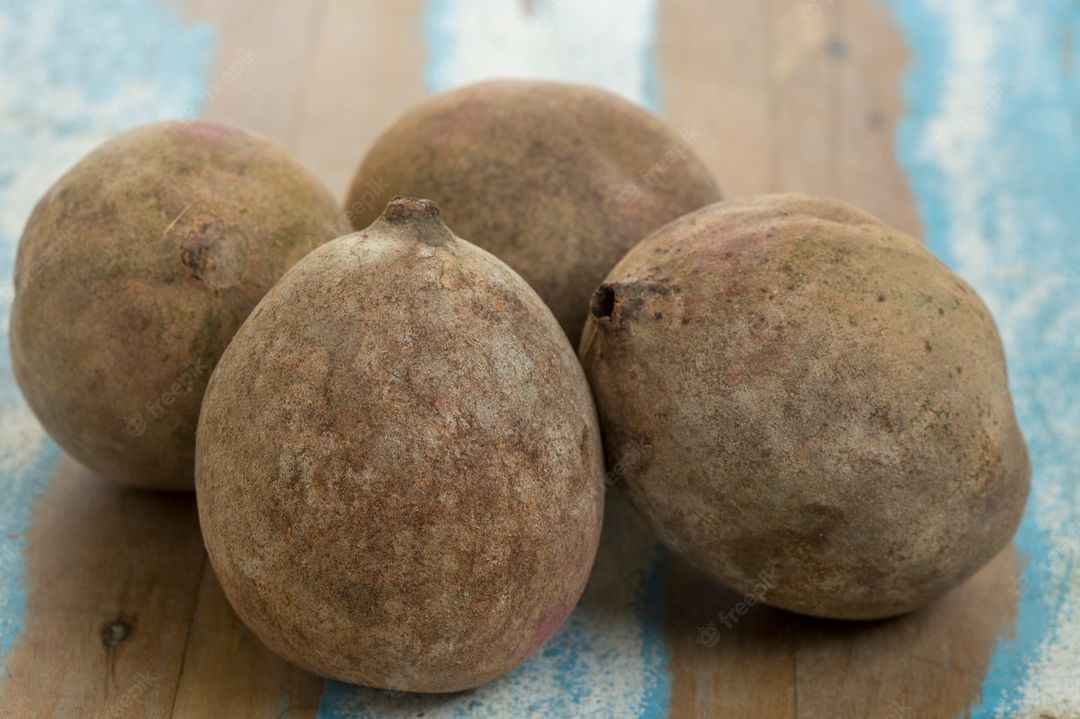
The jenipapo is native to South and Central America. The oval-shaped fruit has a brown wrinkled shell of around 9 cm (3.5 inch) in length. This dull-looking fruit is unique because it contains a natural dye that’s dark purple or blue inside the fruit. This turns black when exposed to the air.
The flesh can’t be described as delicious, so it’s not often eaten fresh. Instead, it’s typically found in syrups, juices, and sweets.
Rich in iron, calcium, and vitamins B1, B2, B5, and C, jenipapo is used in traditional medicine to treat respiratory diseases and anemia.
4. Coconut
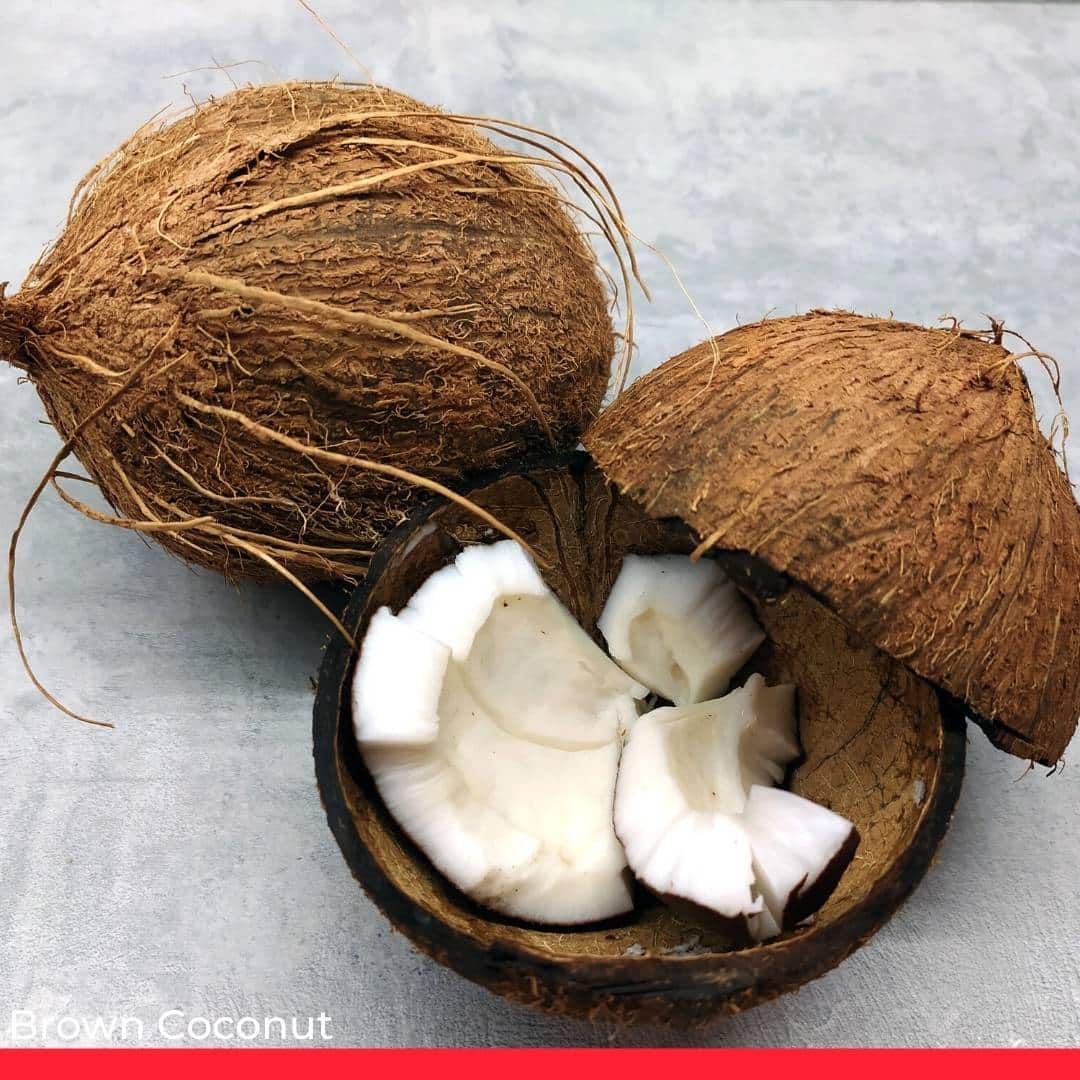
The brown exterior of the coconut, covered in thick fibers, conceals the brilliant white ‘meat’ inside.
Sweet and crunchy, it can be enjoyed raw, grated into baked goods, added to stews and casseroles, or sliced into raw salads. If cracking fresh coconuts doesn’t appeal to you, use the dried grated variety you’ll find everywhere.
Coconut meat is high in minerals, with valuable amounts of manganese, iron, and copper. It’s also a good source of dietary fiber. Although it contains saturated fats, these are medium-chain triglycerides (MCTs), or medium-chain fatty acids, easily converted into energy by the body.
5. Bosc Pears

Bosc pears have a wonderful color and shape. Cinnamon brown with a delicate russet coating, their shape is elegant, long and curved, rather than dumpy like some other varieties. Their beauty makes them a popular choice for artists wanting to paint the perfect still life.
Their firm flesh retains its texture and shape, making them perfect for baking or poaching. They partner well with spices such as cinnamon, clove, or nutmeg. And, of course, they’re great for snacking, especially if you prefer pears with a crunchy texture.
Bosc pears are a low-calorie source of vitamin A and essential minerals, such as potassium and copper.
6. Kiwis
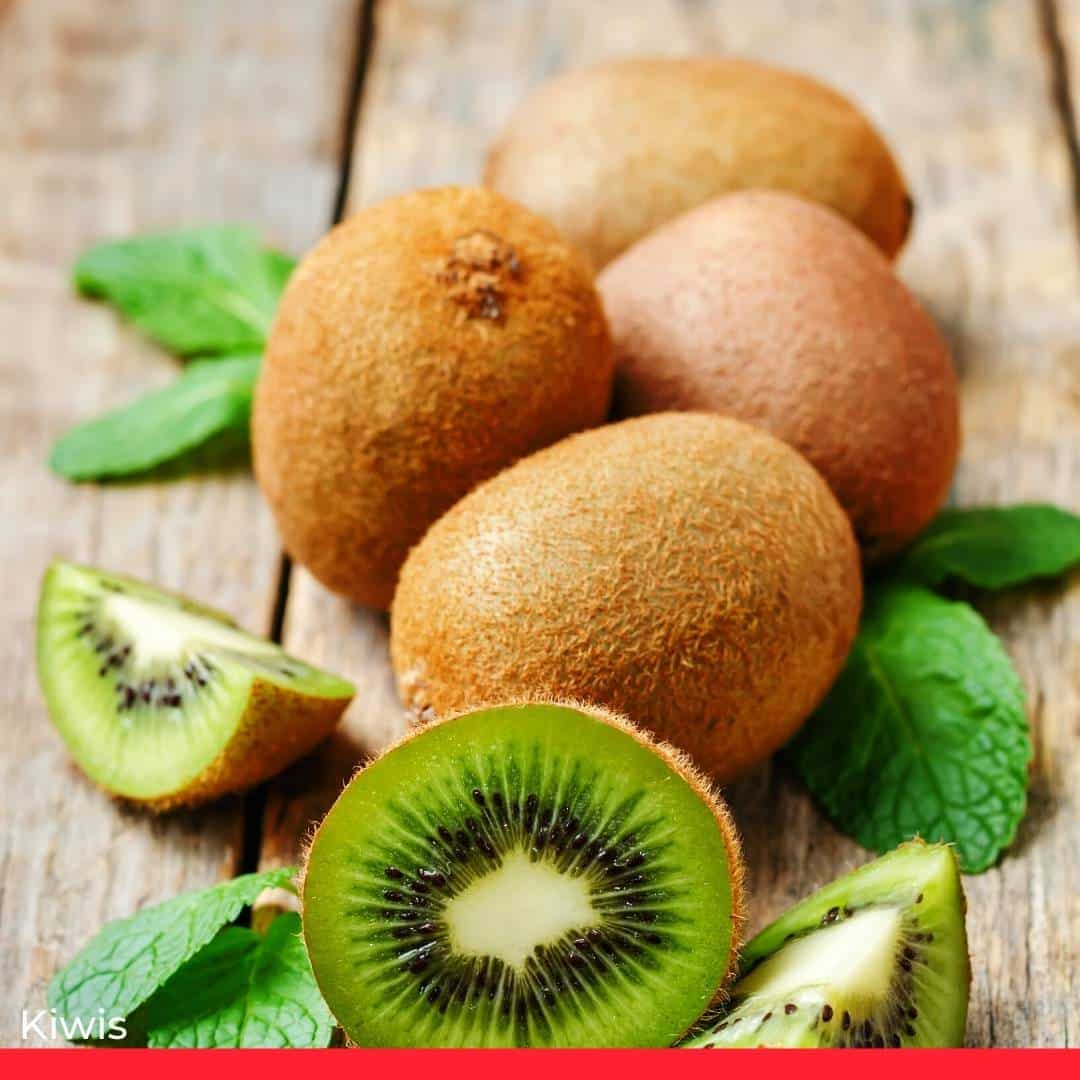
Behind the unpromisingly fuzzy, dull-brown exterior of the kiwi fruit lies the succulent, almost fluorescent-green flesh studded with tiny black seeds.
Remove the inedible skin, and kiwis make an ornamental addition to your fruit salad or breakfast cereal. But they’re more than that. They make fantastic smoothies, sorbets, and ice pops.
Although they’re typically used in sweet recipes, they also make exciting salsas and pair well with chicken and crab meat.
It’s no surprise that kiwis are an acclaimed superfood. Ounce for ounce, they have as much potassium as bananas, more vitamin C than oranges, and even more vitamin E than avocados.
7. Nashi Pears

This ancient pear variety is believed to have originated in Asia over 3000 years ago, and ‘Nashi’ means ‘pear’ in Japanese.
Plump, yellowy-brown Nashis are incredibly crisp and juicy. Their sweet, creamy white flesh is a delicious thirst quencher, and they can be used in all the same ways as other pears.
8. Baobab

The sweet-tart, chalky-white pulp is hidden inside the dull brown shell of the baobab.
Packed with nutrients, this superfood is only available, outside Africa, in powder form. Add it to breakfast cereals, porridge, and energy bars, use it in shakes and smoothies, or add it to sauces at the end of cooking.
9. Musquee de Provence Pumpkins

This medium to large flattened pumpkin has a rind that changes from browny-green to browny-orange when ripe.
The Musquee de Provence is one of the few pumpkin varieties that can be enjoyed raw. It can also be cooked in all the same ways as other pumpkins.
The flesh is rich in vitamin A, beta-carotene, specific B-complex vitamins, and vitamin C. In addition, it’s a valuable source of dietary fiber, potassium, copper, and manganese. It also contains healthy omega-3 fatty acids.
10. Cho Juro pears

Cho Juro Pears are brown-skinned, medium-sized Asian pears with a slightly flattened shape and yellowy-white flesh. Overall, they look like russet apples.
Over recent years, this heritage variety has become less popular as it bruises easily and must be picked before fully ripe. Newer types tend to be juicier, less grainy, and more fragrant. Also, the flavor and even the texture vary from year to year.
Cho Juro pears are a fantastic fiber source and contain vitamin C to help strengthen the immune system. They also provide potassium to aid in balancing the body’s fluid levels.
11. Medlars

These slightly flattened fruits have skin that can be golden, light brown, or burnt umber. The dense, cream-colored acidy flesh harbors a few inedible seeds.
Medlar fruits darken as they mature, and the pulp becomes soft and sticky. This process is known as ‘bletting’, creating a consistency and flavor resembling apple butter with a sweet tang, cinnamon, vanilla, and citrus notes.
They can be enjoyed raw or included in sweet cooked recipes.
Medlar fruits are a fantastic source of vitamin C and iron.
12. Dukus

Small round duku fruits have fuzzy, leathery skin that is pale yellow when young and develops brown spots as it matures. The rind is also covered in fine hairs giving the fruits a fuzzy appearance.
Inside, the translucent white flesh is tender and juicy, with a sweet-sharp citrusy flavor. With their easy-to-peel skin and sweet, tangy flavor, dukus are typically enjoyed raw, as a snack, or in fresh desserts, smoothies, and shakes.
They’re a fantastic source of vitamins A, B, C, and E and contain some fiber as well as iron, phosphorus, potassium, and calcium.
13. Salak Fruits

These small exotic fruits are notable for their rind, which looks like snakeskin, their succulent, juicy flesh, and their luscious tropical flavor.
They’re typically eaten raw as a snack, and you’ll often find them sold by street vendors across Asia.
In Indonesia, salak is called’ The fruit of Memory’ as it contains high levels of potassium and pectin, both important for brain health and development.
14. Sapodilla

These fruits, with their unremarkable dull-brown exterior, go by many names worldwide: chikoo, zapotillo, sapota, naseberry, and zapote.
Sapodillas have a sweet taste and a soft grainy texture. They’re typically consumed raw. It’s essential to discard the seeds due to their tiny hooks, which risk getting stuck in your throat.
They’re a valuable source of fiber to stimulate the digestive tract. Rich in vitamin C, they also provide some vitamin A, iron, copper, and potassium. In addition, sapodillas are a useful source of tannins with anti-bacterial and anti-inflammatory properties.
15. Cupuacu

Although we don’t often come across it, Cupuacu is the national fruit of Brazil. As it’s related to chocolate, it’s worth learning more!
These oval fruits are a dusty mid-brown color. The dull rind conceals juicy white flesh, which is slightly chewy, with a flavor likened to chocolate with hints of fruits such as pineapple or melon.
Cupuacu is typically enjoyed raw or used to make juices and smoothies. It also has a range of uses as a chocolate substitute, though if you want to use it for baking, you’ll need to add plenty of sugar.
Cupuacu is high in antioxidants. In addition, it contains no caffeine but has a mildly stimulating effect, so it could provide a healthy mid-morning pick-me-up.
16. Kumato

Of all the things we need in the world right now, you may say a brown tomato isn’t one of them.
Yet these heritage fruits, which reach peak sweetness when their skin becomes dark brown with a greenish tinge, have an intriguing, complex sweetness. So they do have something other than novelty to offer.
The Kumato tomato provides plenty of potassium, magnesium, and vitamins A and C. The potassium and the fruit’s vitamin B can help reduce cholesterol and lower blood pressure.
tomato provides plenty of potassium, magnesium, and vitamins A and C. The potassium and the fruit’s vitamin B can help reduce cholesterol and lower blood pressure.
17. Chocolate Habaneros

Be warned! These dark brown beauties are far hotter than most jalapenos. They have a unique earthy fruitiness that works fantastically in smoky Mexican mole sauces or other rich salsas.
They also pair well with apricots and raisins to create fiery sweet sauces.
You won’t be eating huge quantities, so the nutrients aren’t that important. Still, it’s good to know they contain some vitamin C and are fat- and cholesterol free.
18. Tamarind

Tamarind fruit looks like bean pods, with a shell ranging from cinnamon to clay in color. When young, the fruit is tender and sour. As it matures, it becomes sweeter and less acidic. As a result, tamarind is exceptionally versatile. In addition to the fresh fruit, it’s used in soups, sauces and chutneys.
Tamarind contains many nutrients that help prevent high blood pressure and cardiovascular diseases. These include vitamins C, K, B6, B5, folate, and calcium.
19. Langsat
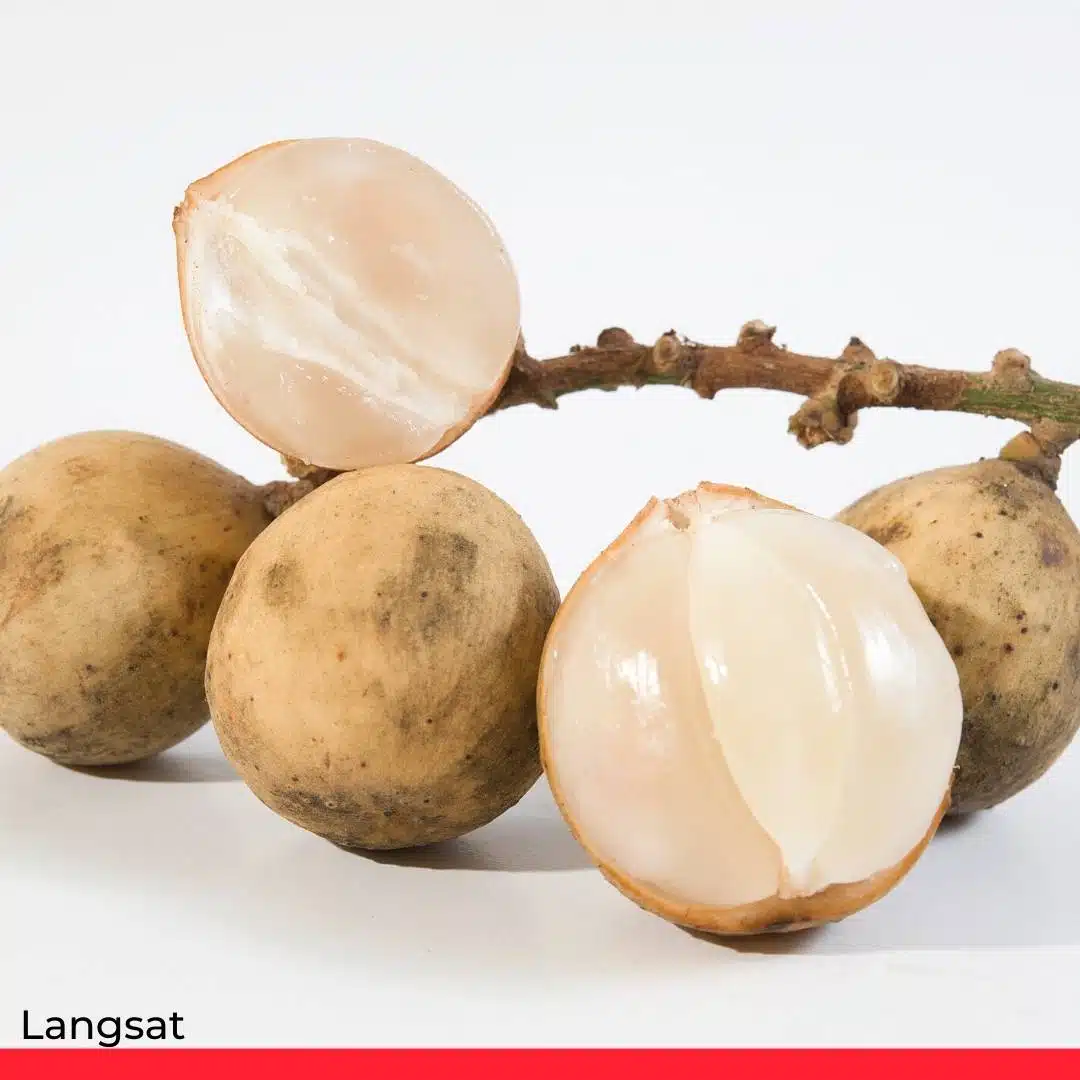
Langsats are small egg-shaped brown fruits with white flesh. They taste bitter-sweet, something like a mild grapefruit.
They are typically enjoyed raw, perhaps added to salads, or juiced. They can also be added to puddings, baked goods, and jellies and make excellent preserves.
They’re high in vitamins A and C and have a reputation for keeping the skin looking youthful and radiant.
20. Brown Turkey Figs

As these figs ripen, they turn purplish-brown. The flesh is a gorgeous contrasting orange-pink.
They have a milder flavor than the more common Black Mission figs.
Like all figs, they’re packed with nutrients, including iron, calcium, magnesium, phosphorus, potassium, and zinc, plus vitamins A and C. In addition, they famously promote digestive and heart health and help manage blood sugar levels.
The post 20 Delicious Brown Fruits You Should Try appeared first on Chef's Pencil.
from Chef's Pencil https://ift.tt/1Ks5Zia
via https://chefsspenncil.blogspot.com

No comments:
Post a Comment